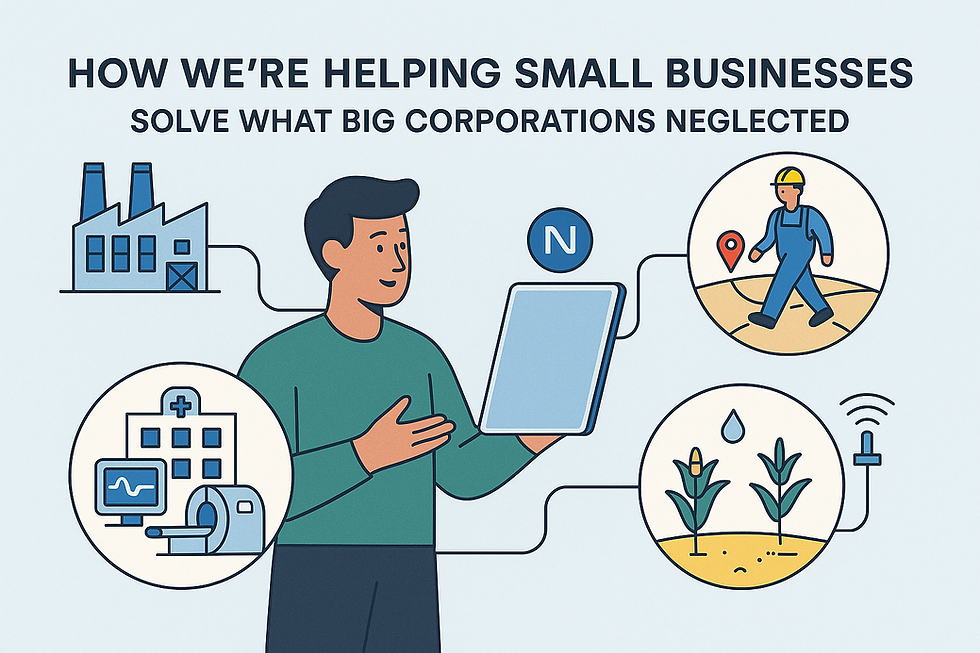How Businesses Use Data to Improve Decision-Making
- Aeroshil Nameirakpam

- Jul 29
- 4 min read
In today’s fast-paced world, businesses are increasingly relying on data insights to make smarter decisions. Data is no longer just numbers stored in spreadsheets; it has become a powerful tool that drives strategy, innovation, and growth. By analyzing data, companies can understand customer behavior, optimize operations, and predict future trends. This blog post explores how businesses use data insights to improve decision-making, providing practical examples and actionable recommendations.
The Importance of Data Insights in Business Decisions
Data insights refer to the meaningful patterns and trends extracted from raw data. These insights help businesses understand what is happening, why it is happening, and what might happen next. Using data insights, companies can:
Identify new market opportunities
Improve customer experience
Reduce costs and increase efficiency
Enhance product development
Manage risks effectively
For example, a retail company might analyze sales data to discover which products are popular in different regions. This information allows them to stock the right items in the right stores, increasing sales and reducing waste.
Data insights also enable businesses to move from intuition-based decisions to evidence-based decisions. This shift reduces guesswork and increases the chances of success.

How Businesses Collect and Analyze Data Insights
Collecting data is the first step toward gaining valuable insights. Businesses gather data from various sources such as:
Customer transactions
Social media interactions
Website analytics
Supply chain operations
Market research surveys
Once collected, the data must be cleaned and organized to ensure accuracy. After that, businesses use analytical tools and techniques to extract insights. These include:
Descriptive Analytics - Understanding what happened in the past.
Diagnostic Analytics - Exploring why something happened.
Predictive Analytics - Forecasting future outcomes.
Prescriptive Analytics - Recommending actions based on predictions.
For instance, an e-commerce company might use predictive analytics to forecast demand for certain products during holiday seasons. This helps them plan inventory and marketing campaigns effectively.
Moreover, businesses are increasingly adopting advanced technologies like artificial intelligence (AI) and machine learning (ML) to automate data analysis and uncover deeper insights.

What does Nibiaa do?
Nibiaa is a leading platform that specializes in spatial data analysis and visualization. It helps businesses leverage geographic data to make better decisions. By combining location data with other business data, Nibiaa enables companies to uncover patterns that are not visible through traditional data analysis.
For example, a logistics company can use Nibiaa to optimize delivery routes by analyzing traffic patterns, weather conditions, and customer locations. This reduces fuel costs and improves delivery times.
Nibiaa ’s tools are user-friendly and allow businesses to create interactive maps and dashboards. These visualizations make it easier for decision-makers to understand complex data and act quickly.
In addition, Nibiaa supports integration with various data sources and analytics platforms, making it a versatile solution for many industries.

Practical Examples of Data Insights Improving Business Decisions
Many companies have successfully used data insights to transform their operations. Here are some real-world examples:
Retail: A supermarket chain analyzed customer purchase data to personalize promotions. By targeting customers with relevant offers, they increased sales by 15% and improved customer loyalty.
Healthcare: Hospitals use data insights to predict patient admission rates. This helps them allocate staff and resources efficiently, reducing wait times and improving care quality.
Manufacturing: A factory implemented predictive maintenance by analyzing machine sensor data. This approach reduced downtime by 20% and saved significant repair costs.
Finance: Banks use data insights to detect fraudulent transactions in real-time. This protects customers and reduces financial losses.
These examples show that data insights can be applied across industries to solve diverse challenges.
How to Implement Data-Driven Decision-Making in Your Business
To successfully use data insights, businesses should follow these steps:
Define Clear Objectives
Identify what decisions you want to improve and what questions you need answers to.
Collect Relevant Data
Gather data that directly relates to your objectives. Ensure data quality and completeness.
Choose the Right Tools
Use analytics software that fits your business size and needs. Consider platforms that support visualization and predictive analytics.
Build a Skilled Team
Employ data analysts or train existing staff to interpret data and generate insights.
Integrate Insights into Processes
Make data insights part of regular decision-making meetings and strategy sessions.
Monitor and Adjust
Continuously track the impact of data-driven decisions and refine your approach as needed.
Additionally, businesses can benefit from location intelligence solutions to add geographic context to their data. This can reveal new opportunities and risks related to location.
The Future of Data Insights in Business
As technology advances, the role of data insights in business decision-making will only grow. Emerging trends include:
Real-time Analytics: Instant access to data will enable faster and more responsive decisions.
AI and Automation: More sophisticated algorithms will uncover hidden patterns and automate routine decisions.
Data Democratization: Tools will become easier to use, allowing more employees to leverage data insights.
Ethical Data Use: Businesses will focus on transparency and privacy to build trust with customers.
By embracing these trends, companies can stay competitive and innovative.
Using data insights effectively transforms how businesses operate. It empowers them to make informed decisions, optimize resources, and better serve their customers. Whether through advanced analytics platforms like Nibiaa or integrating geographic data with location intelligence solutions, the potential of data-driven decision-making is vast and accessible. Start harnessing your data today to unlock new growth opportunities.




Comments